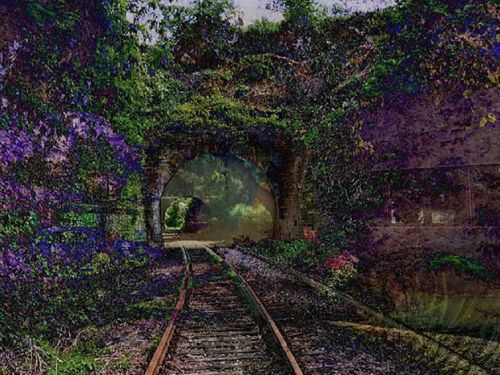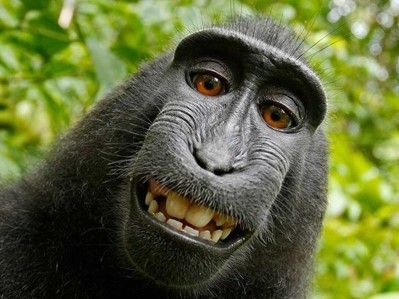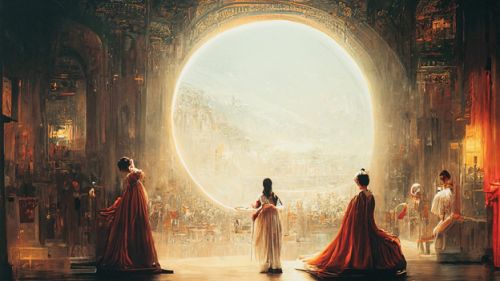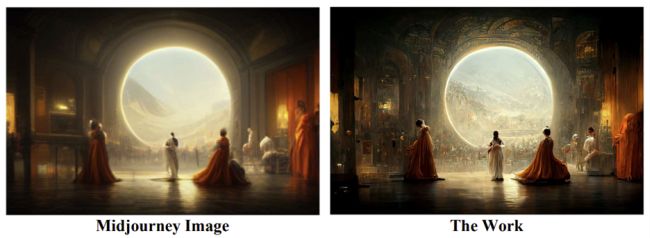PatentNext Takeaway: According to a recent district court decision, an artificial intelligence (AI) cannot be an "author" as that term is defined by U.S. copyright law. This decision follows the U.S. Ninth Circuit Court of Appeal's precedent regarding a "monkey selfie" photograph, where that court found that non-humans (e.g., monkeys) lack standing to sue under U.S. copyright law. The U.S. Copyright Office has since used such rulings to deny copyright registration of works that identify non-humans (i.e., AI systems) as the sole author.
****
As a new joke goes in the intellectual property (IP) space, "What do monkeys and artificial intelligence machines have in common?" Answer: at least for now, neither can be an "author" as that term is defined by current U.S. Copyright law. See Title 17 of the U.S. Code. This is because the literal text of U.S. Copyright law suggests that an "author" must be human. See, e.g., 17 U.S.C. § 101 (using phrases that suggest human authorship, e.g., "[t]he author's 'widow' or 'widower' is the author's surviving spouse under the law of the author's domicile at the time of his or her death, whether or not the spouse has later remarried").
Two recent decisions, one from the U.S. District Court for the District of Columbia (the "D.C. district court") and the other from the U.S. Copyright Office, illustrate this point.
Thaler v. Perlmutter
In Thaler v. Perlmutter, the D.C. district court considered whether an artificial intelligence (AI) machine could be considered an "author" under U.S. Copyright law. Case No. 22-1564 (D.D.C Aug. 18, 2023). The work in question was a piece of visual art (an image) titled "A Recent Entrance to Paradise," as reproduced below:

The image had been generated by an AI machine named the "Creativity Machine." Id. at 2. The copyright applicant, Dr. Stephen Thaler, listed the Creativity Machine as the author when submitting his copyright application to the U.S. Copyright Office. Id. at 1. The Copyright Office subsequently denied the application on the grounds that the work lacked human authorship, which, according to the U.S. Copyright Office, is a prerequisite for a valid copyright to issue. Id.
Considering the legal question on appeal for the first time, the D.C. district court sided with the copyright office, finding that the copyright office "did not err in denying the copyright registration application presented by [Dr. Thaler]" and that "United States copyright law protects only works of human creation." Id. at 7.
In reaching its conclusion, the D.C. district court disagreed with Dr. Thaler that the Creativity Machine was akin to a camera in Burrow-Giles Lithographic Co. v. Sarony, 111 U.S. 53, 58 (1884). In particular, Dr. Thaler had argued that history has proven copyright law "malleable enough to cover works created with or involving technologies" and cited the 1884 case of Burrow-Giles Lithographic Co. v. Sarony, where the Supreme Court found that U.S. copyright law covered photographs even though photographs were produced by "a machine" (a camera), which were relatively new to the world at the time. Burrow-Giles Lithographic, 111 U.S. at 58. For an in-depth discussion of Burrow-Giles Lithographic, and its application to AI, see PatentNext's article The Curious Case of Burrow-Giles Lithographic (an 1884 U.S. Supreme Court decision involving "new" camera technology), and how it could help Shape Today's Thinking on Artificial Intelligence (AI) Inventorship.
The D.C. district court found that the Creativity Machine operated differently from a camera. In particular, the district court found Dr. Thaler's arguments to the Copyright Office compelling, where D.r Thaler argued that no human played any role in creating the image and that the Creativity Machine had generated the work "autonomously" on its own. See id. at fn. 1. Importantly, this differed from the camera in the Burrow-Giles Lithographic case, which involved a human author (a photographer) who selected and arranged the scene of the photograph before capturing the photograph with the camera. This difference proved fatal to Dr. Thaler's case, where the district court refused to stretch copyright law to remove human authorship completely:
Copyright has never stretched so far, however, as to protect works generated by new forms of technology operating absent any guiding human hand, as plaintiff urges here. Human authorship is a bedrock requirement of copyright.
Id. at 8.
As noted by the district court, "recognition of the copyrightability of a photograph rested on the fact that the human creator, not the camera, conceived of and designed the image and then used the camera to capture the image." Id. 10 (citing at Burrow-Giles Lithographic, 111 U.S. at 60). "The photograph was 'the product of [the photographer's] intellectual invention,' and given 'the nature of authorship,' was deemed 'an original work of art . . . of which [the photographer] is the author.' Id. (citing Burrow-Giles Lithographic, 111 U.S. at 60-61).
The Way of the Monkey – Naruto v. Slater
With respect to the issue of copyright authorship, the D.C. district court also found a similarity between the Creativity Machine and a monkey in Naruto v. Slater, 888 F.3d 418, 420 (9th Cir. 2018). In Naruto, a monkey (named "Naruto") had taken a picture of himself, i.e., the so-called "Monkey Selfie" photograph (as reproduced below):

At issue was whether Naruto (the monkey) had legal standing to sue under U.S. copyright law for the alleged infringement of the photograph. Id. at 418. While addressing the underlying issue of authorship, the Naruto court concluded that only humans had standing, explaining that the terms used to describe who has rights under the copyright act, such as "'children,' 'grandchildren,' 'legitimate,' 'widow,' and 'widower[,]' all imply humanity and necessarily exclude animals." Id. at 426.
Thus, just as in the Naurto case, so too did the Thaler case lack a human-identified author, which the D.C. district court took issue with, e.g., stating that Dr. Thaler "can point to no case in which a court has recognized copyright in a work originating with a non-human." Thaler, Case No 22-1564 at 12. The district court cited other cases, too, finding that "[i]n all these cases, authorship centers on acts of human creativity." Id. at 11
Because of this, the D.C. district court held that "the Copyright Office acted properly in denying copyright registration for a work created absent any human involvement." Id. at 14.
As a side note, the D.C. district court's decision precluding Dr. Thaler's Creativity Machine from being an "author" pursuant to copyright law parallels the U.S. Court of Appeals for the Federal Circuit's decision regarding patent inventorship. In an earlier patent-related case, Dr. Thaler had filed two patent applications naming his AI machine (e.g., named "DABUS" ) as the sole "inventor." See Thaler v. Vidal, case no. 2021-2347 (Fed. Cir. Aug. 5, 2022). The Federal Circuit held, however, that U.S. Patent law requires at least one human inventor. Other jurisdictions worldwide have held the same, requiring at least one human inventor pursuant to respective patent laws. See, e.g., PatentNext's article Can an Artificial Intelligence (AI) be an Inventor?
U.S. Copyright Office decision – Théâtre D'opéra Spatial
More recently, the U.S. Copyright Office cited the Thaler v. Perlmutter decision (as discussed above) in refusing to grant copyright registration of a visual art piece generated by an AI tool. See Refusal to Register Théâtre D'opéra Spatial (SR # 1-11743923581; Correspondence ID: 1-5T5320R) (Sep. 5, 2023) (the "Refusal to Register"). In that case, the copyright office considered an AI-generated image titled "Théâtre D'opéra Spatial" (shown below) as created by artist Jason Allen using an AI tool named Midjourney, which is a type of "text-to-picture artificial intelligence service." Id. at 2.

Mr. Allen sought to register the image with the copyright office but did not disclose in his application that the image was created using AI. Id. at 2. However, the copyright office was familiar with the image, given that Mr. Allen had previously entered it in the 2022 Colorado State Fair annual fine art competition, where it became the first AI-generated work to win.
The copyright office requested additional information regarding Mr. Allen's use of Midjourney so as to explore his human-related contributions to the work. Id. In response, Mr. Allen explained that he "input numerous revisions and text prompts at least 624 times" to arrive at an initial version of the work. Id. Afterward, he used Adobe Photoshop to "remove flaws and create new visual content" and used Gigapixel AI to "upscale" the image, increasing its resolution and size. Id.
The original Midjourney Image and the final image, as prepared by Mr. Allen, are shown side-by-side below:

While the images are different, with Mr. Allen's submitted art ("The Work" as shown above) having additional image artifacts and clarity over the original image (the "Midjourney Image" as shown above), the U.S. Copyright Office nonetheless found that The Work contained more than a de minimis amount of AI-generated content as taken from the original AI-generated work. Thus, the U.S. Copyright Office found that this triggered its AI Registration Guidance, i.e., "when an AI technology receives solely a prompt from a human and produces complex written, visual, or musical works in response, the 'traditional elements of authorship' are determined and executed by the technology—not the human user." AI Registration Guidance, 88 Fed. Reg. at 16,192.
Citing its AI Registration Guidance, the U.S. Copyright Office invited Mr. Allen to disclaim and exclude The Work's non-human authorship elements. However, Mr. Allen refused, instead requesting the U.S. copyright office reconsider and grant him registration to the whole work, given that he, as the alleged author, transformed the "raw material" of the Midjourney Image through his "artistic contributions." Refusal to Register at 3.
The U.S. Copyright Office declined to reconsider and instead cited the Thaler v. Perlmutter decision (among others), stating that U.S. courts have interpreted the statutory phrase "works of authorship" to require human creation of the work. Id. at 3 (citing Thaler v. Perlmutter, No. 22-cv-1564, 2023 WL 5333236, at *4 (D.D.C. Aug. 18, 2023) (stating that "human authorship is a bedrock requirement of copyright" in affirming the Office's refusal to register a work "autonomously" created by AI)).
Because Mr. Allen refused to disclaim the AI-generated material, the U.S. Copyright Office denied registration of the work in full. Refusal to Register at 1.
As a side note, this decision is similar to the U.S. Copyright Office's case involving a comic book. In that case, the U.S. Copyright Office originally granted copyright registration to a comic book titled "Zarya of the Dawn." However, upon learning that the comic book included images created by an AI tool, the copyright office canceled the original registration but allowed a new registration more narrowly focused on the contributions of the human author, namely the text of the comic in the book, and the selection of arrangements of the AI-generated images. In that case, however, the author cooperated with the copyright office to identify the human-related contributions. As a result, the U.S. Copyright Office allowed registration of those human-related contributions. See PatentNext's article U.S. Copyright Office Partially Allows Registration of Work having AI-generated Images ("Zarya of the Dawn").
Conclusion
For now, authors who use AI tools for creating a work of art should keep a log of their contributions in creating a final version of the art or otherwise work. Such information should be submitted to the U.S. Copyright Office when seeking registration.
Such a practice seems prudent until, at least until Congress can act to change the course of current law in this area. Even the D.C. district court in Thaler v. Perlmutter noted the possible future change to the law given the rapid pace of AI and its impact on the art world:
Undoubtedly, we are approaching new frontiers in copyright as artists put AI in their toolbox to be used in the generation of new visual and other artistic works. The increased attenuation of human creativity from the actual generation of the final work will prompt challenging questions regarding how much human input is necessary to qualify the user of an AI system as an "author" of a generated work, the scope of the protection obtained over the resultant image, how to assess the originality of AI-generated works where the systems may have been trained on unknown pre-existing works, how copyright might best be used to incentivize creative works involving AI, and more.
Thaler, Case No 22-1564 (D.D.C Aug. 18, 2023).
The D.C. district court cited a letter from Senators Thom Tillis and Chris Coons to Kathi Vidal, Under Secretary of Commerce for Intellectual Property and Director of the U.S. Patent and Trademark Office, and Shira Perlmutter, Register of Copyrights and Director of the U.S. Copyright Office (Oct. 27, 2022). The letter requested that the United States Patent and Trademark Office and the United States Copyright Office "jointly establish a national commission on AI" to assess, among other topics, how intellectual property law may best "incentivize future AI-related innovations and creations." Id.
The content of this article is intended to provide a general guide to the subject matter. Specialist advice should be sought about your specific circumstances.

